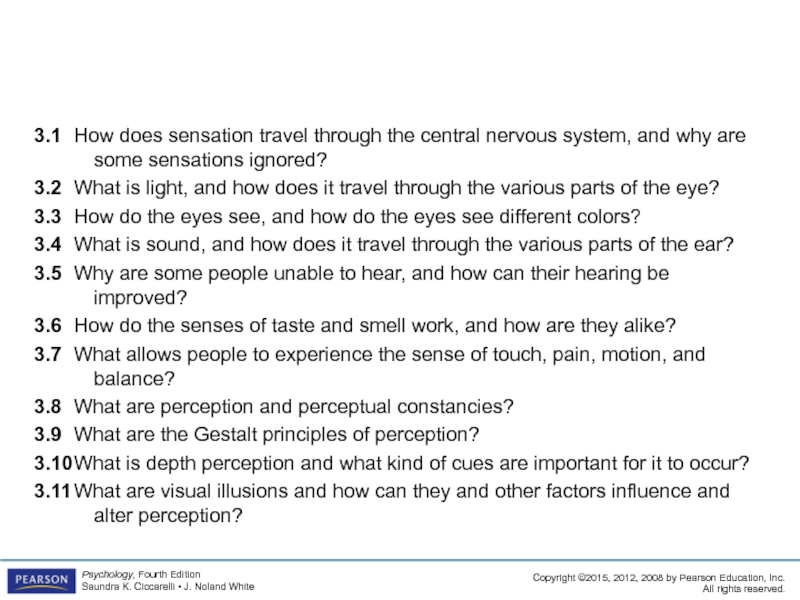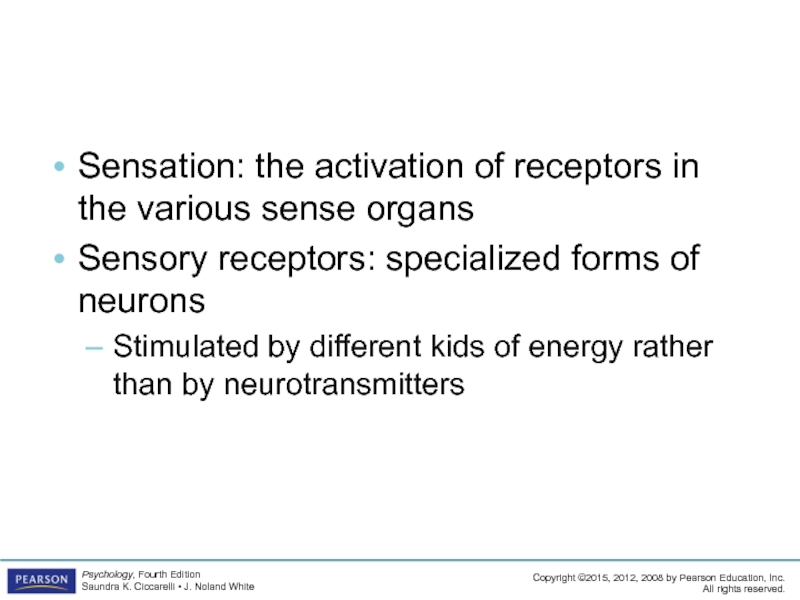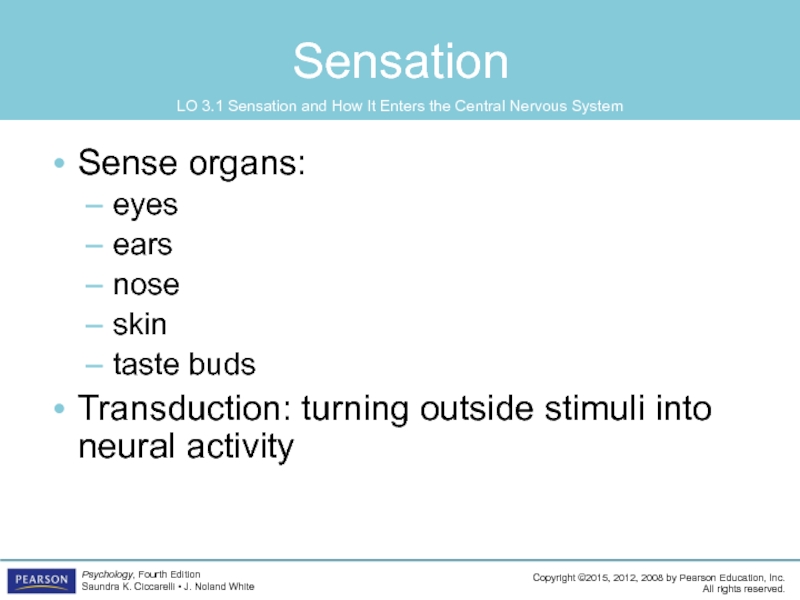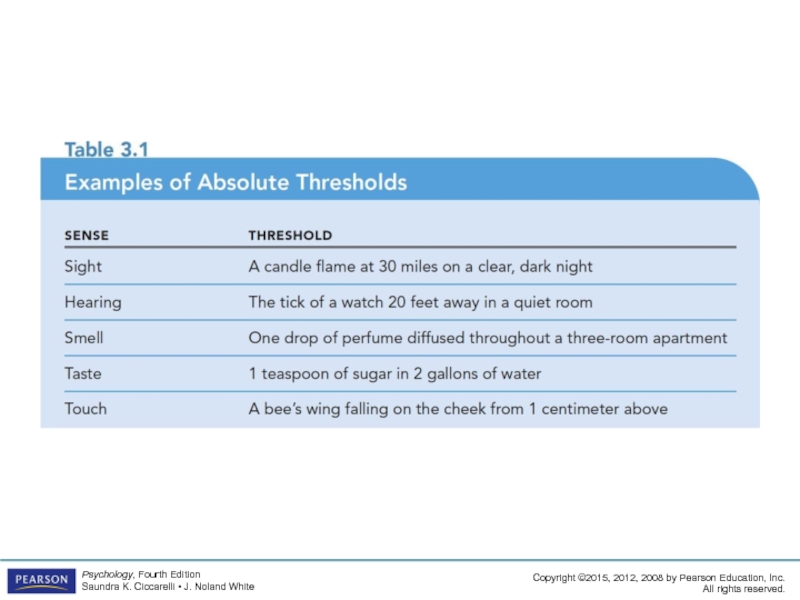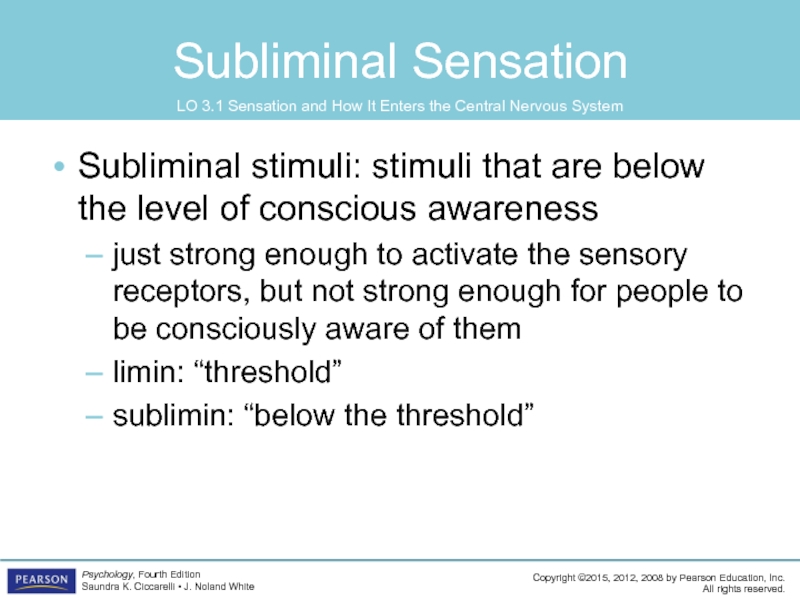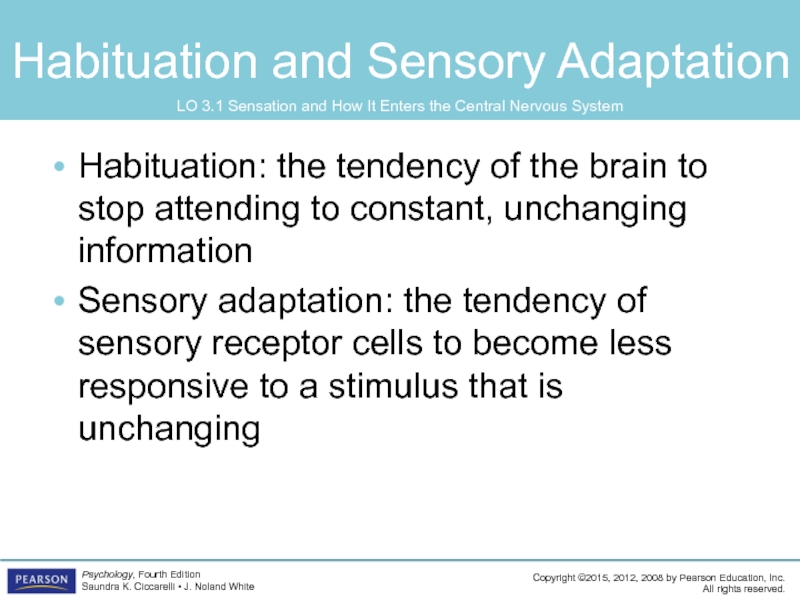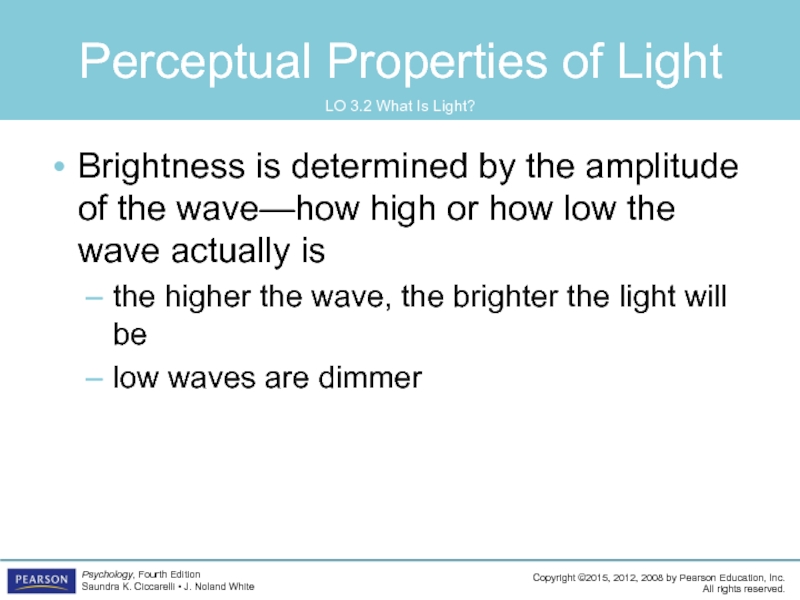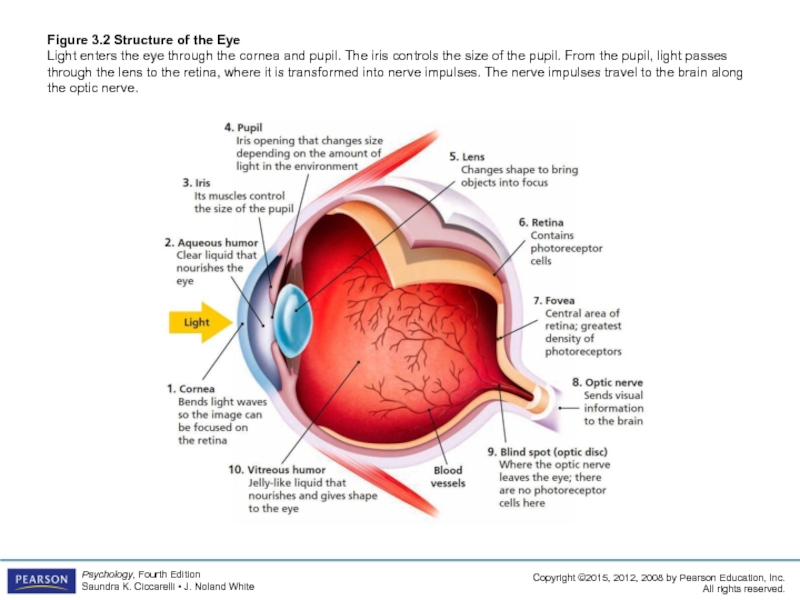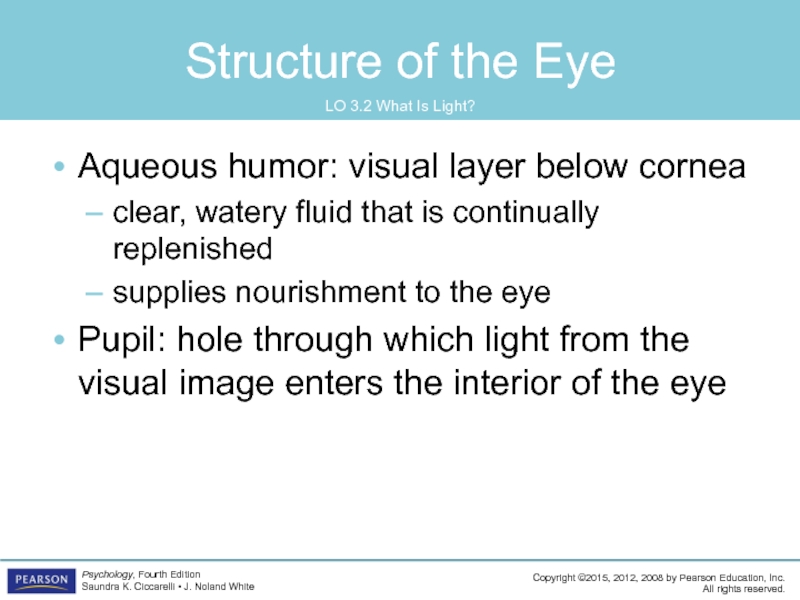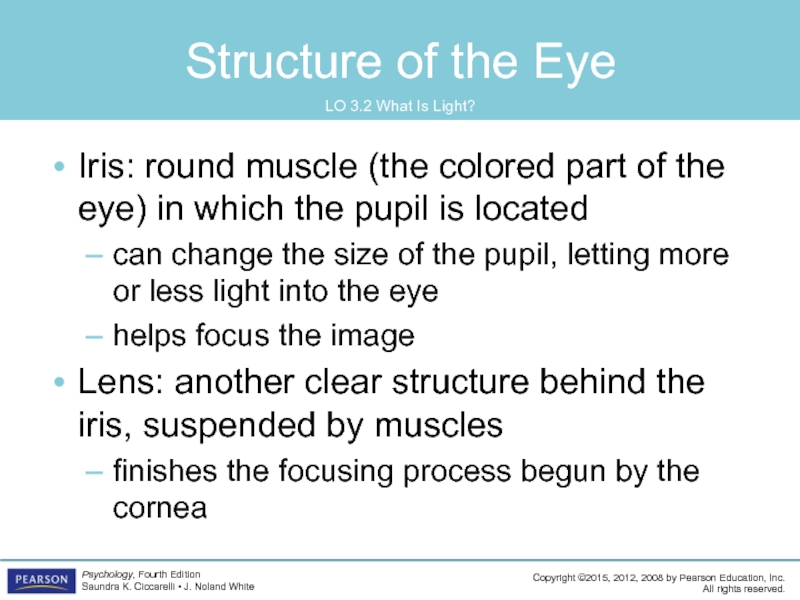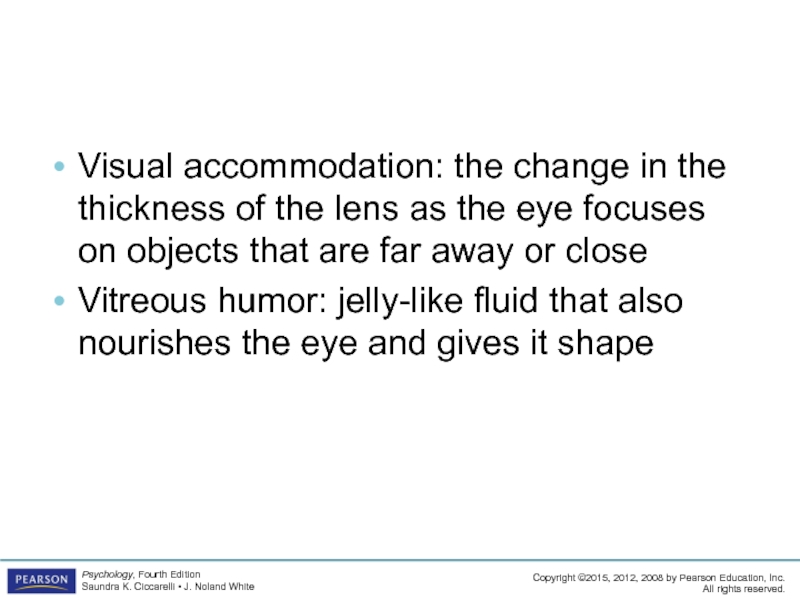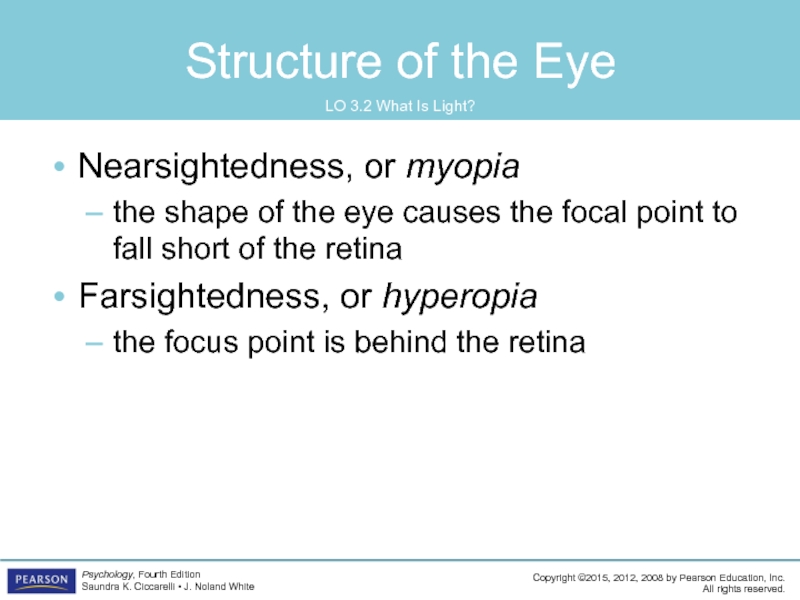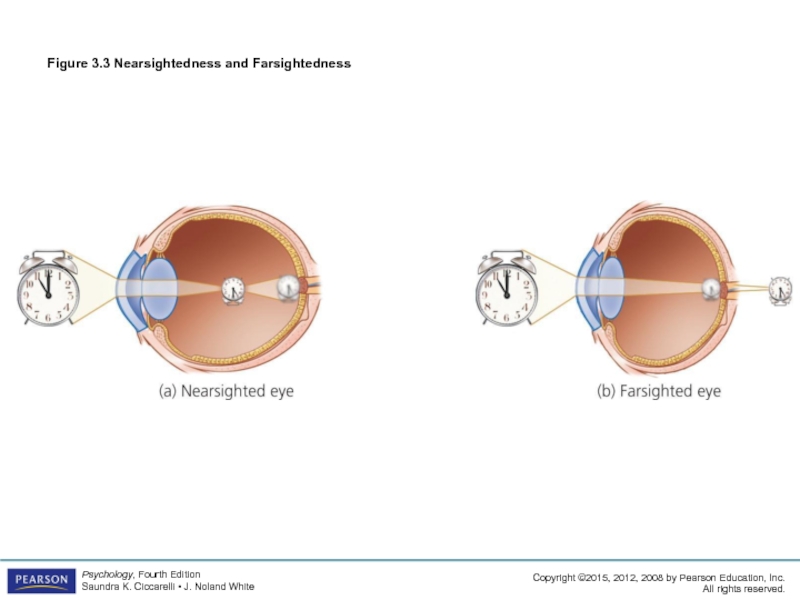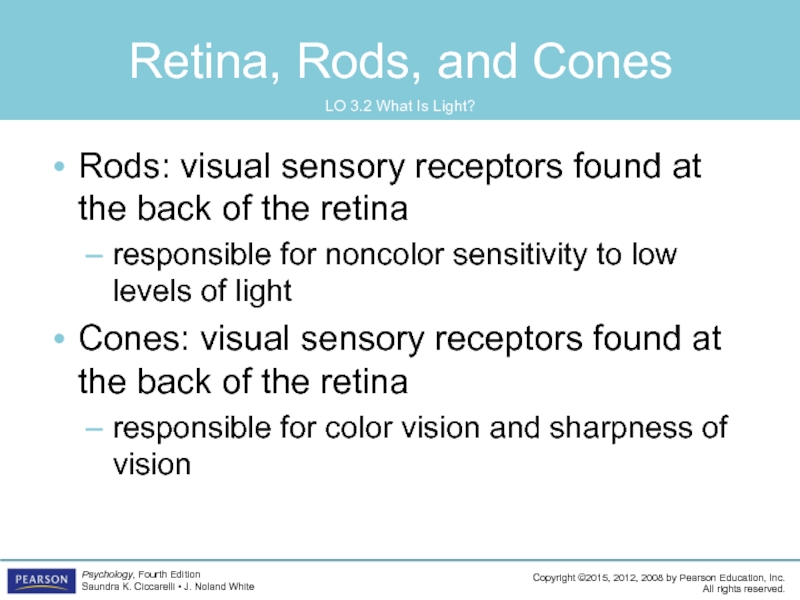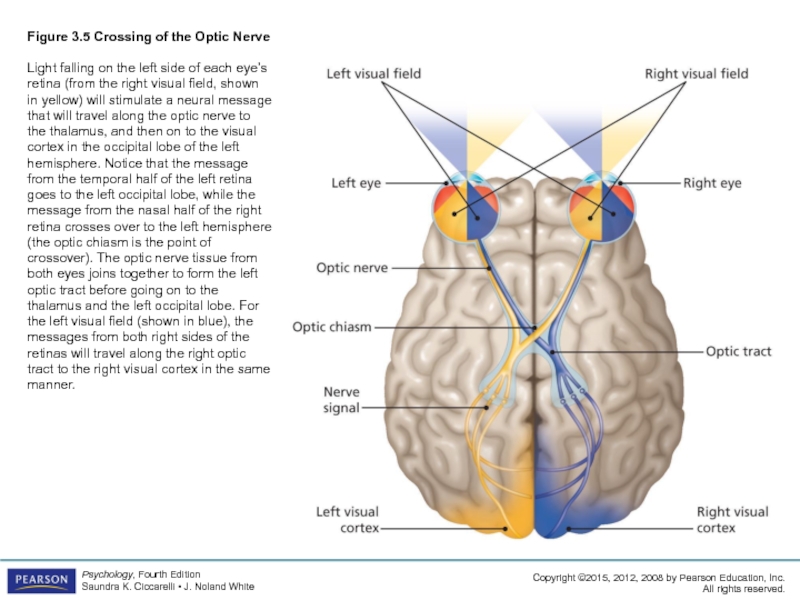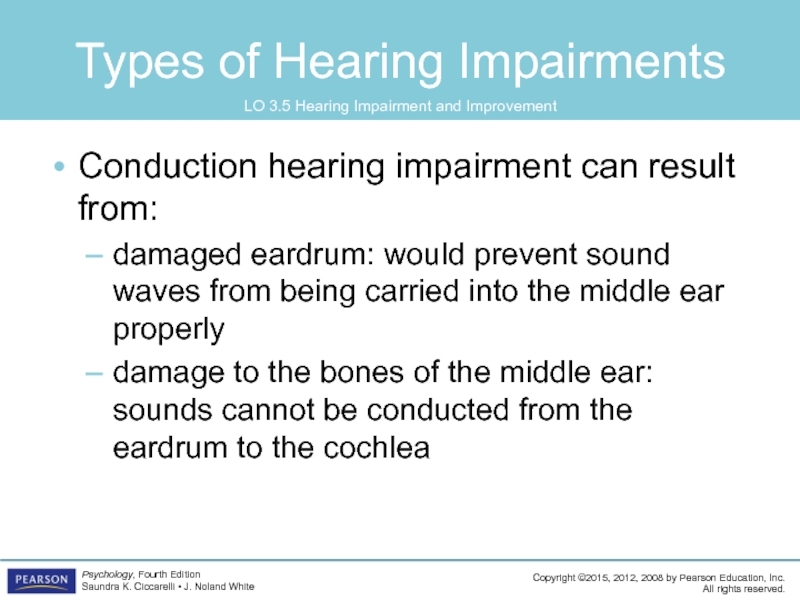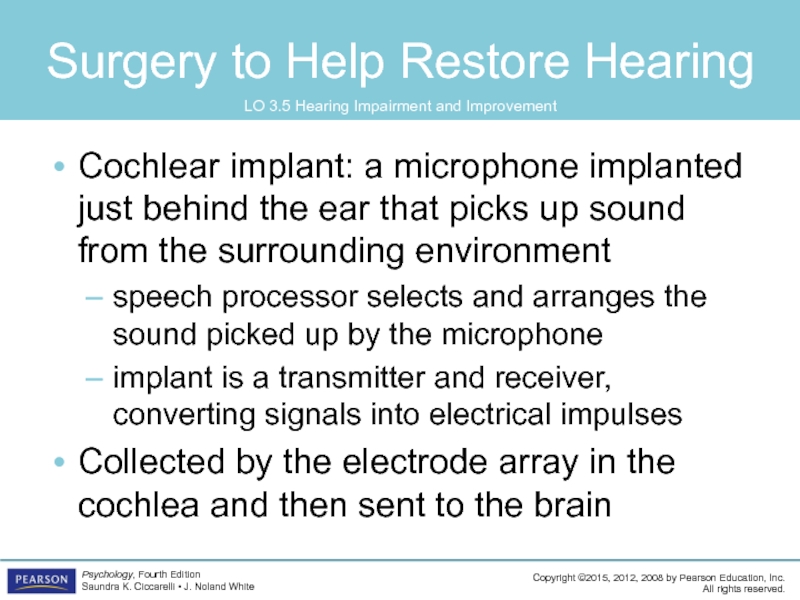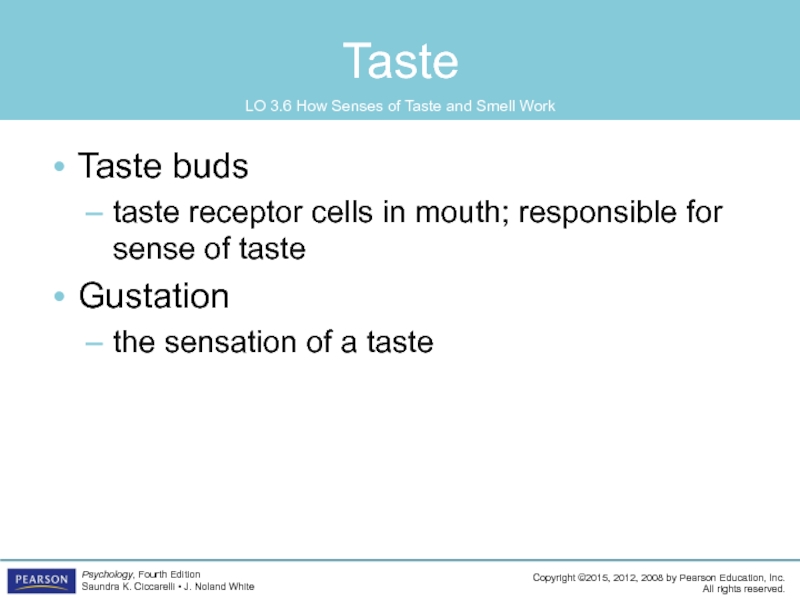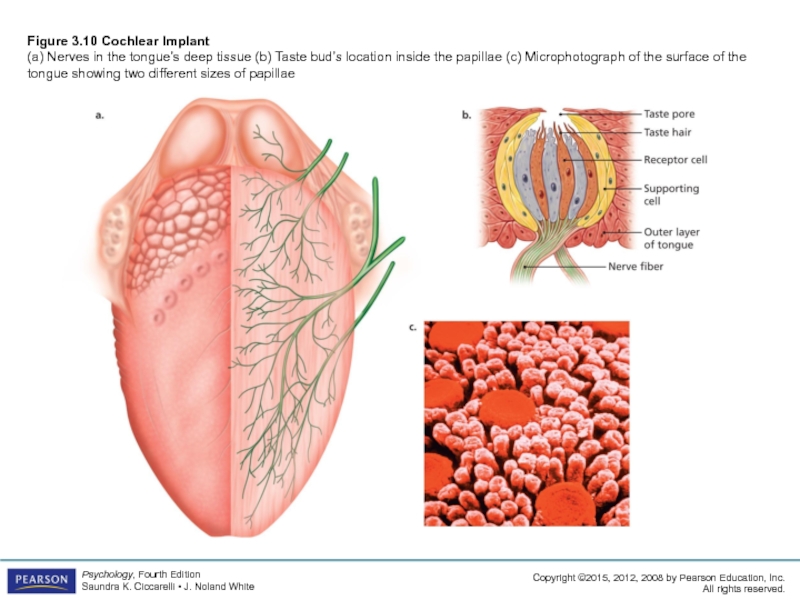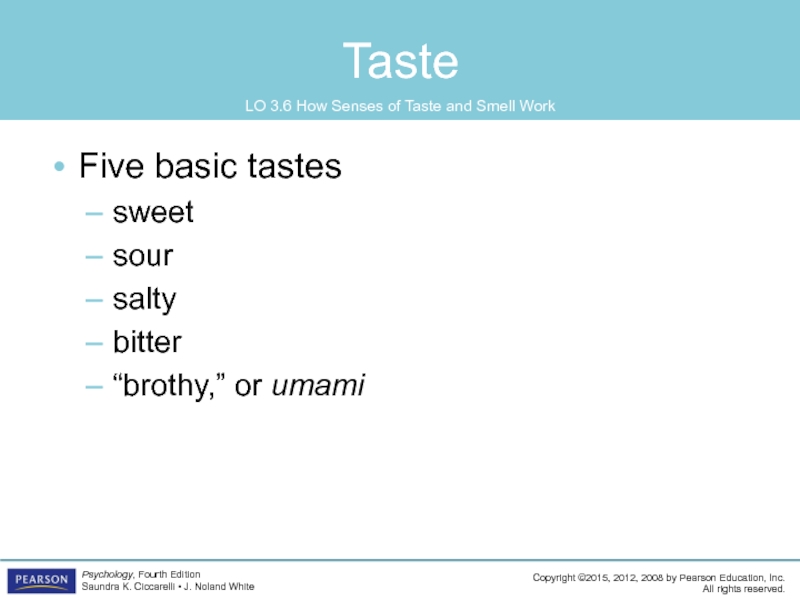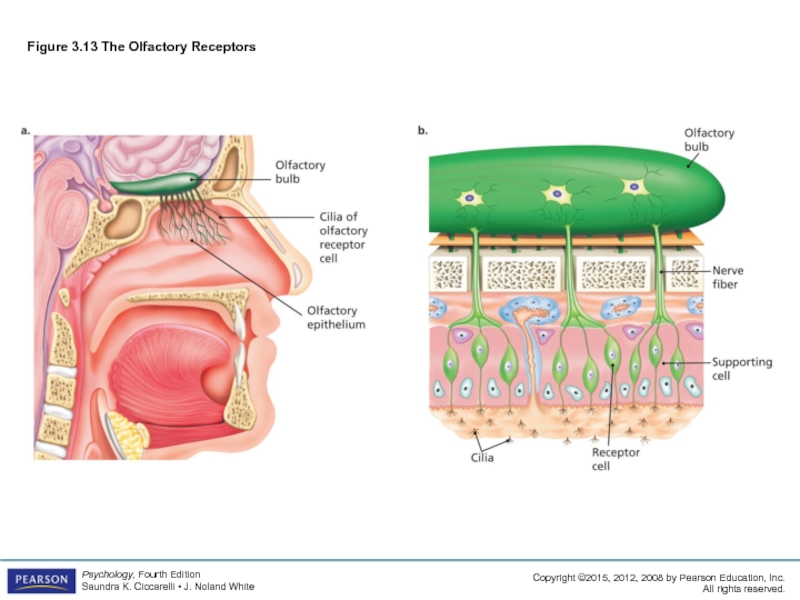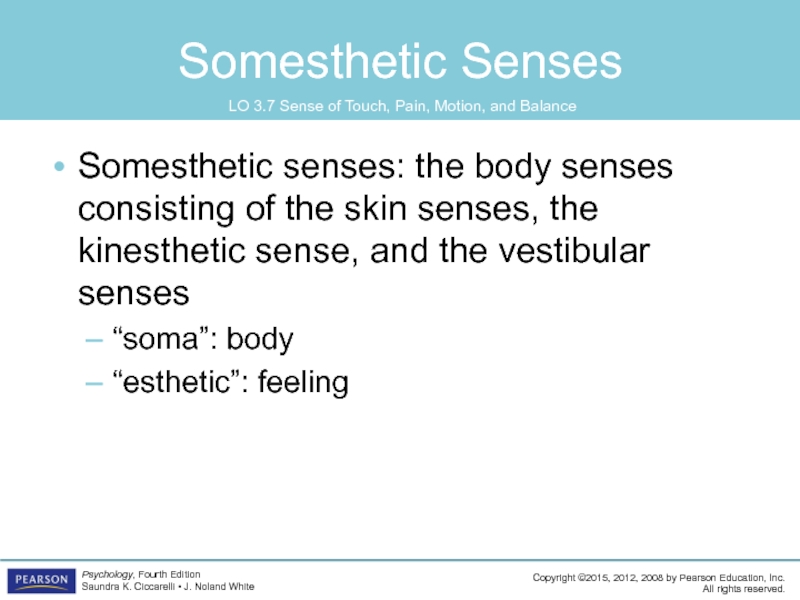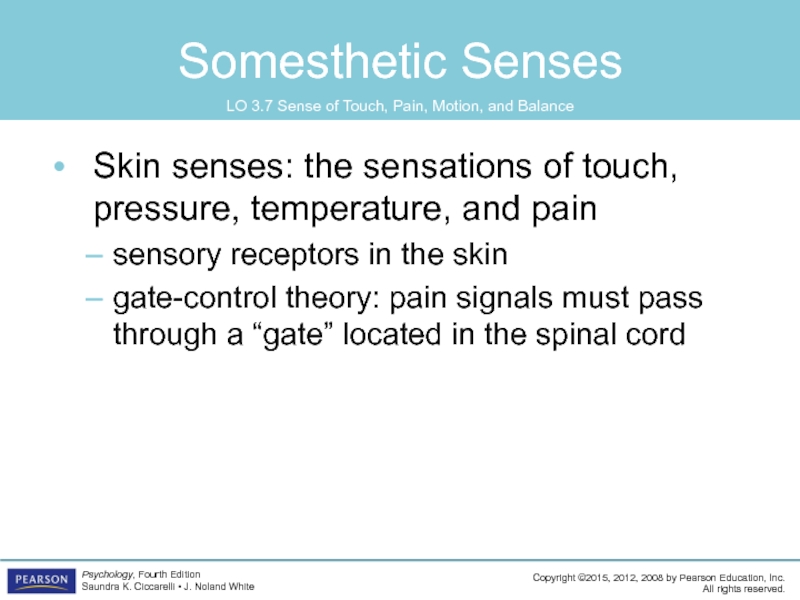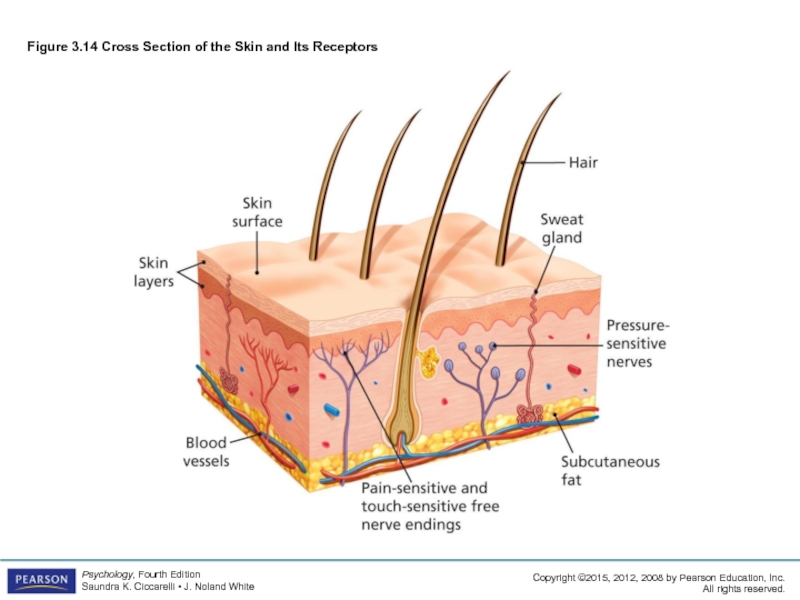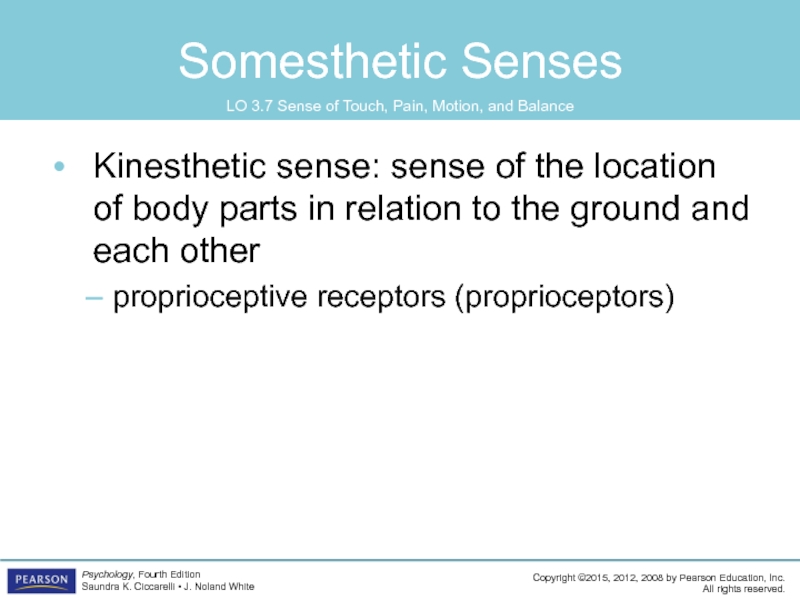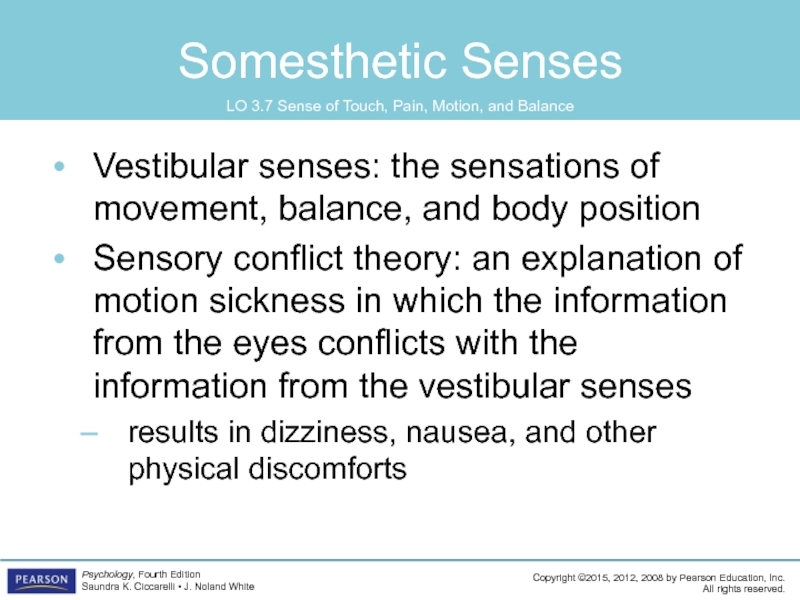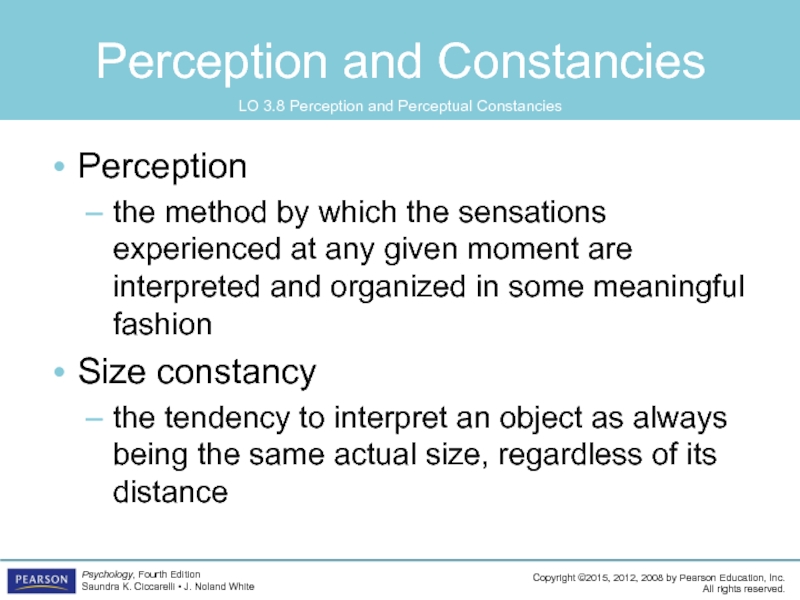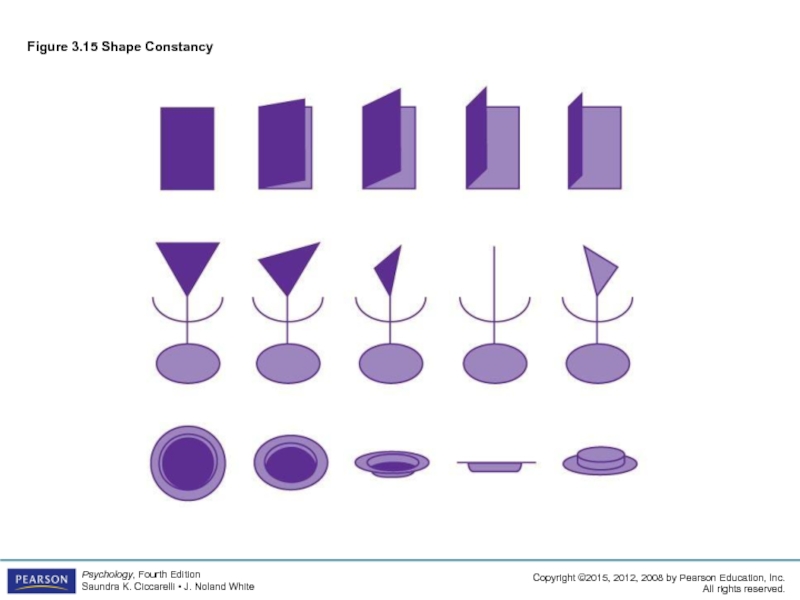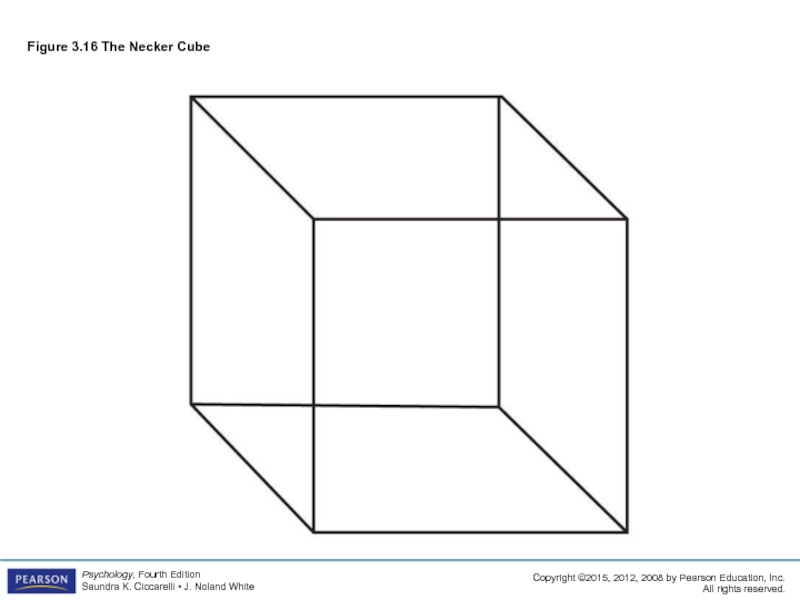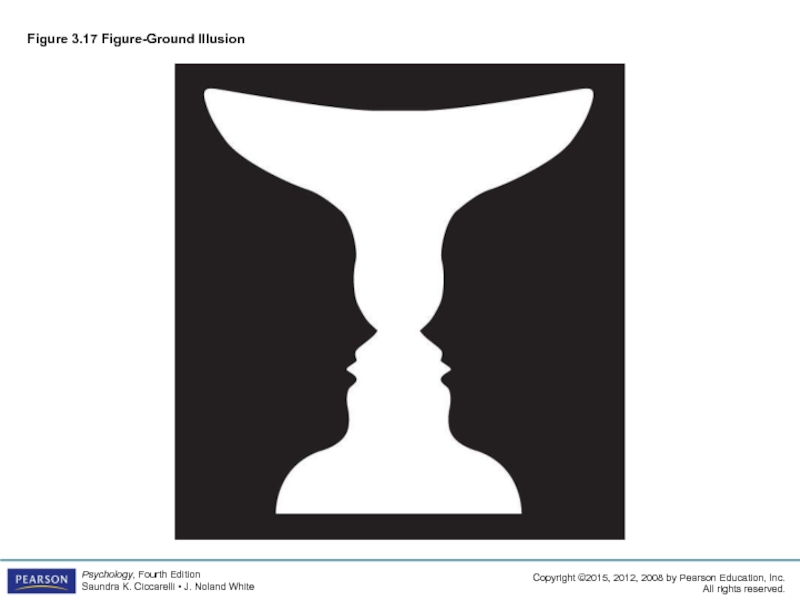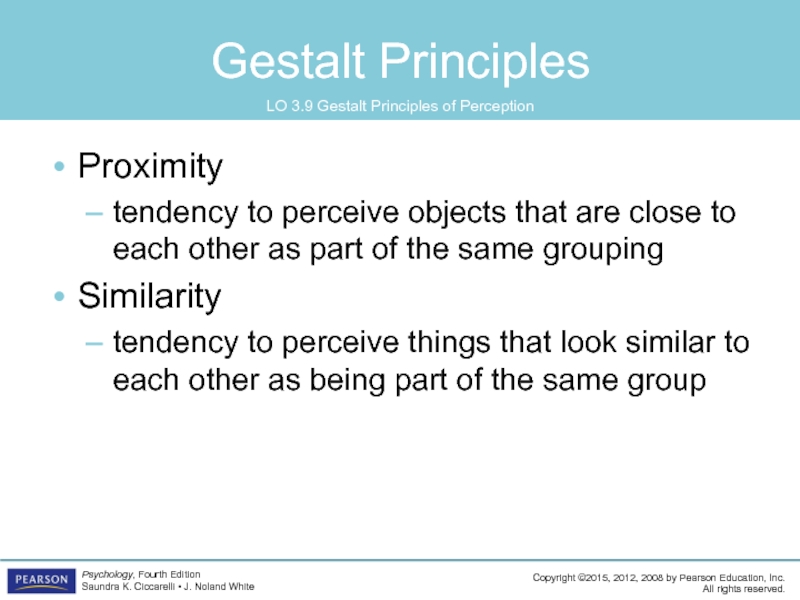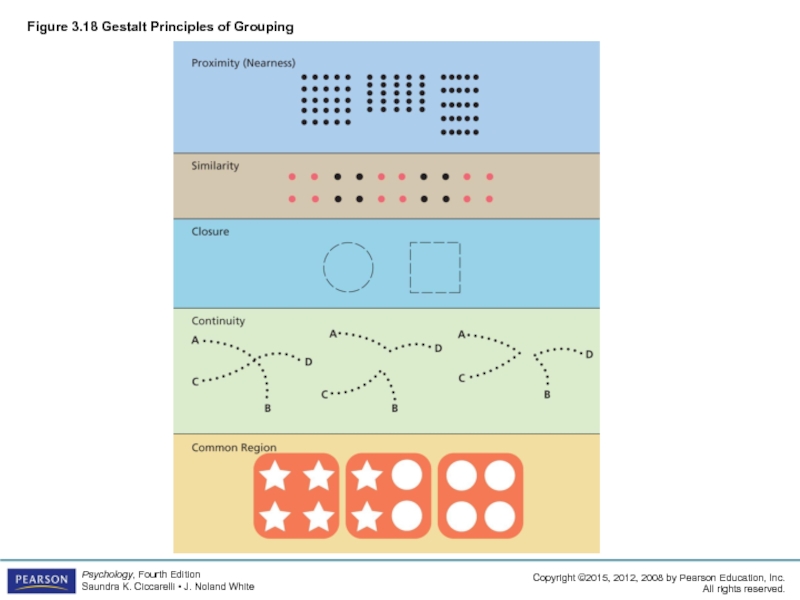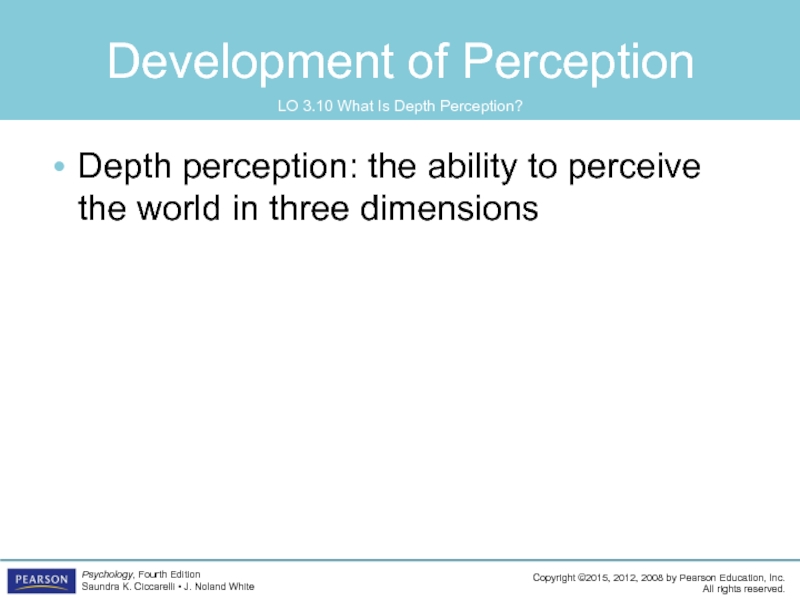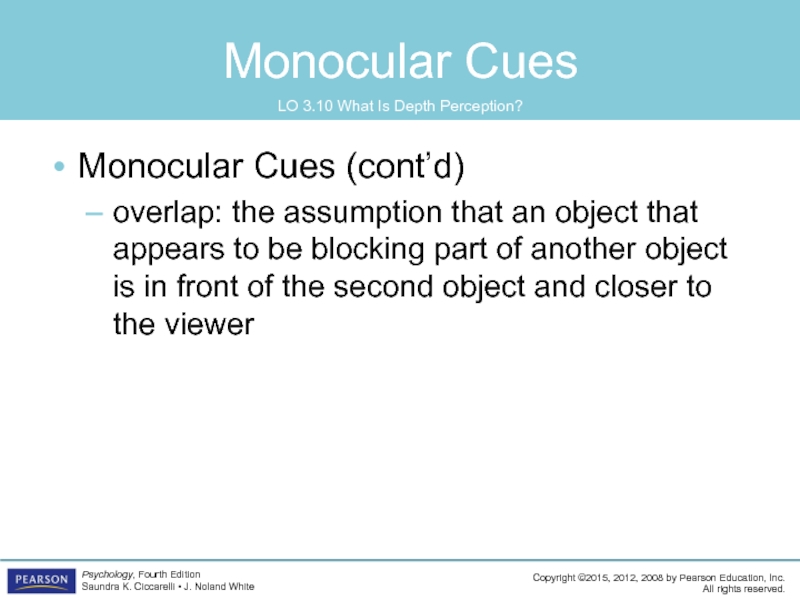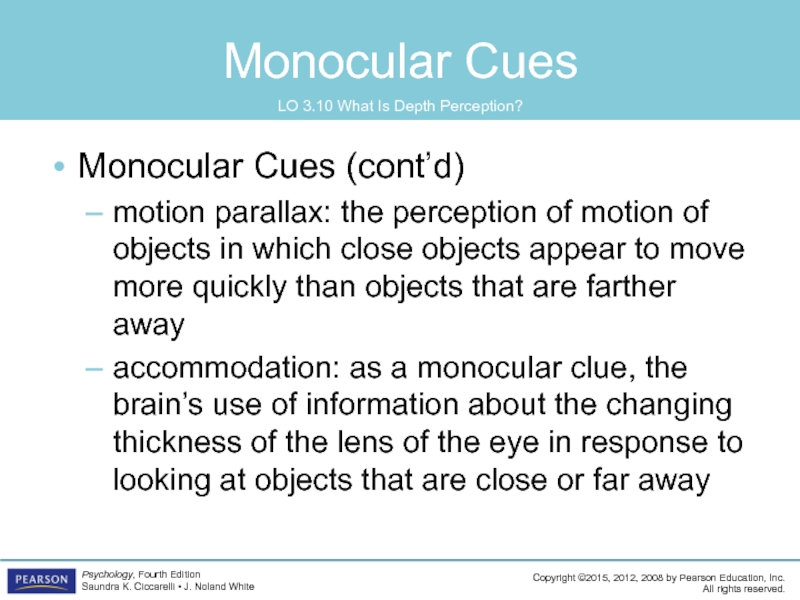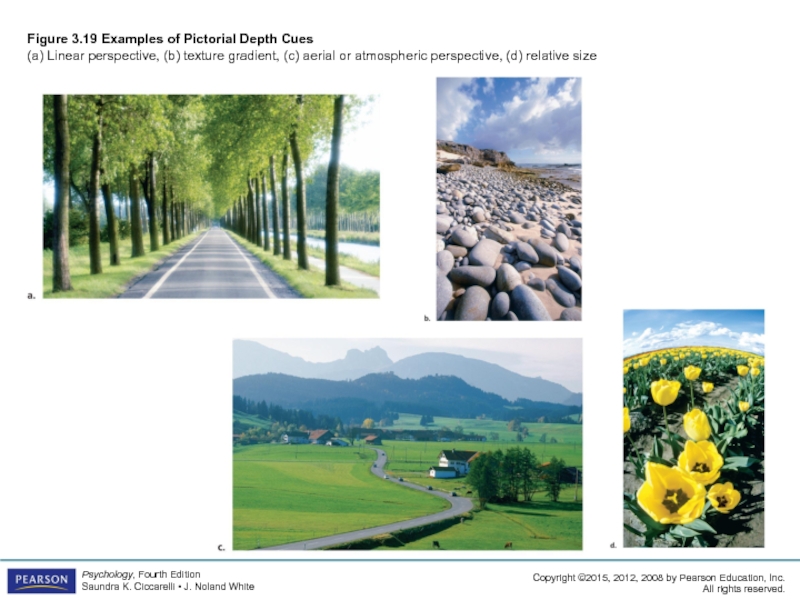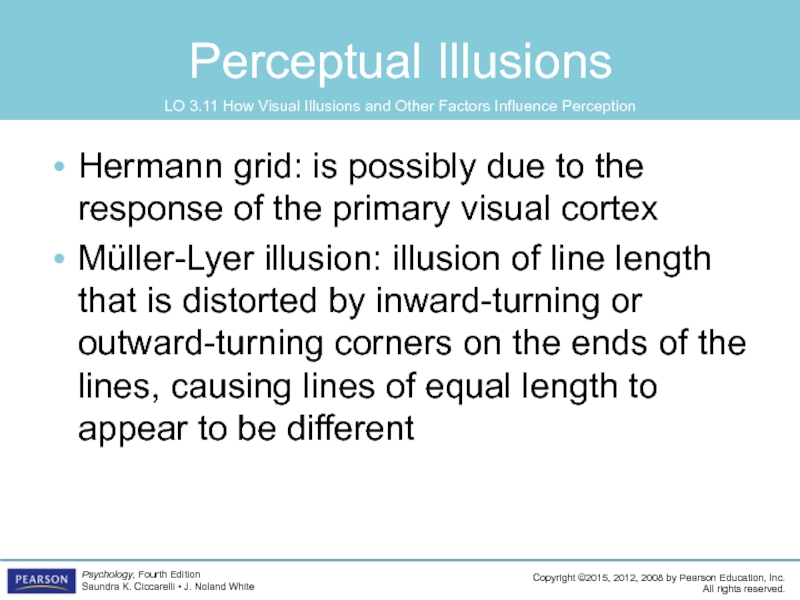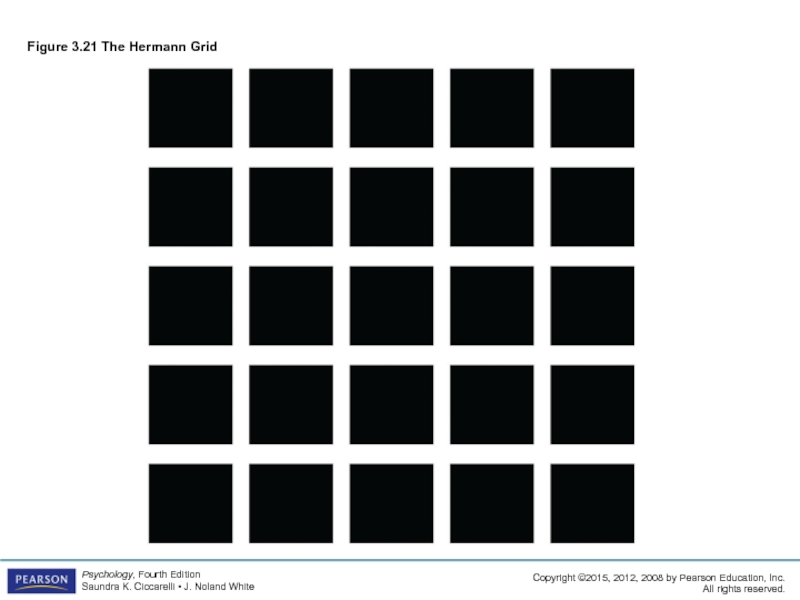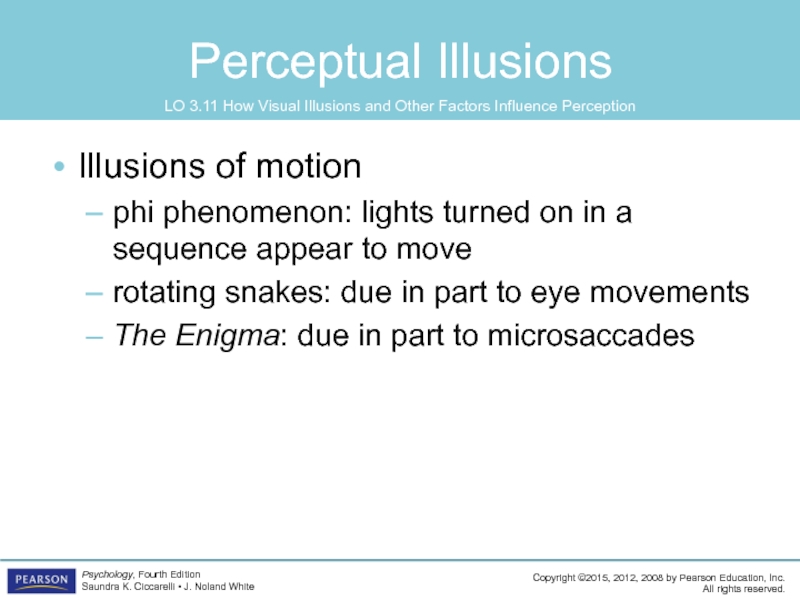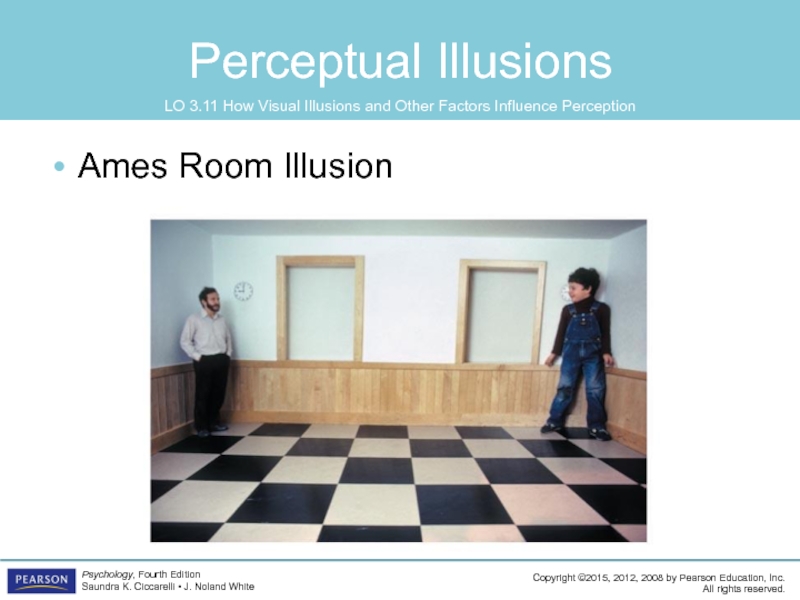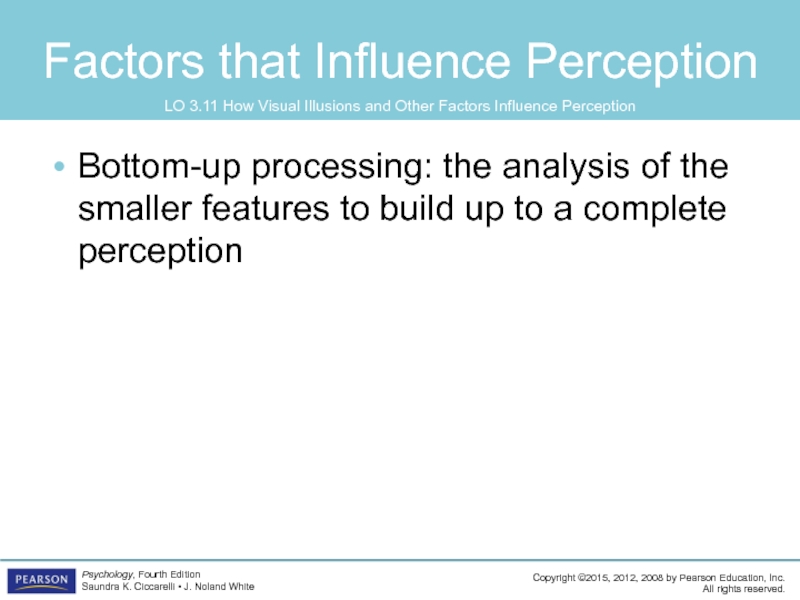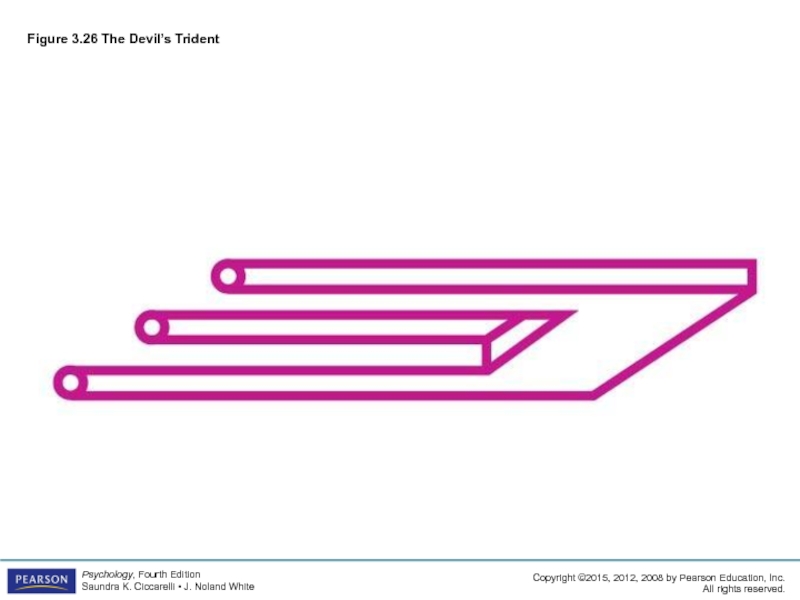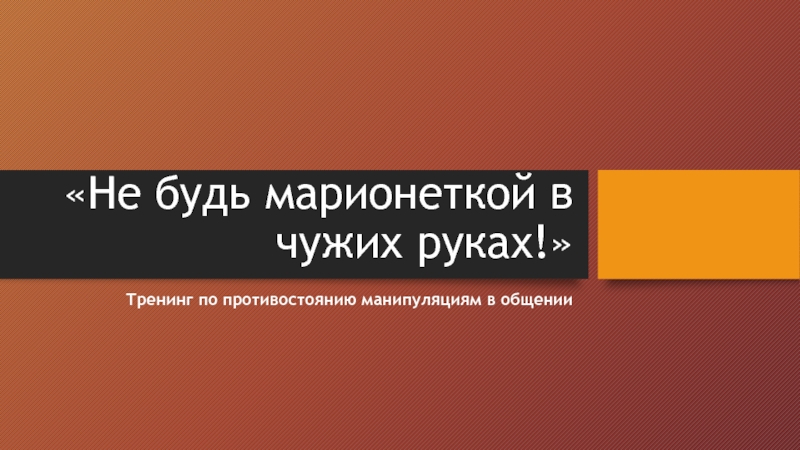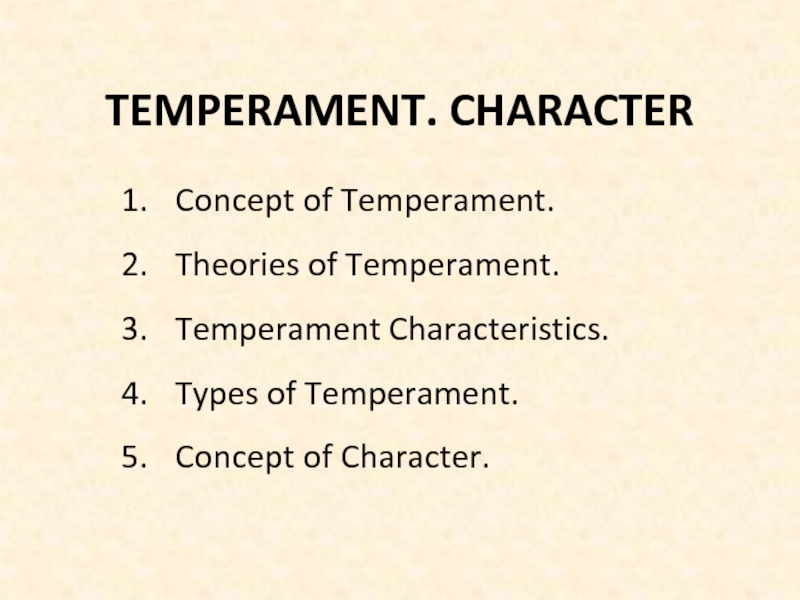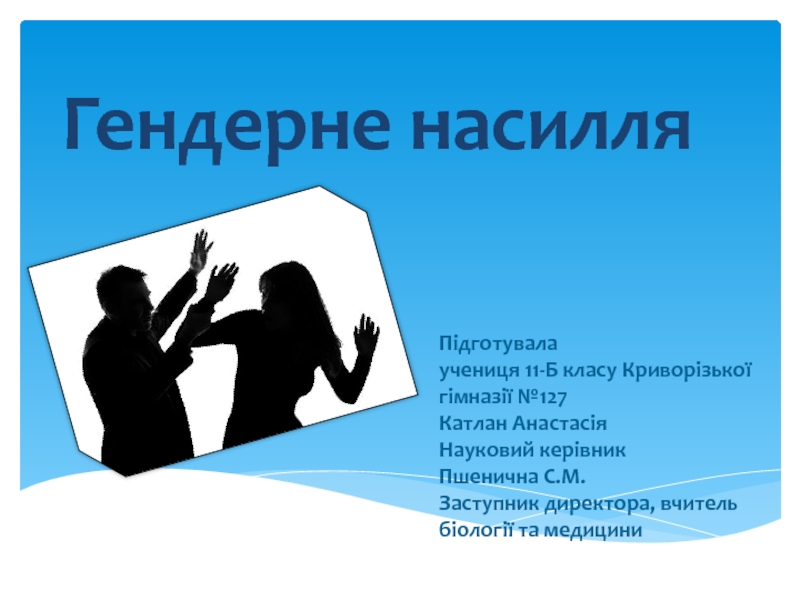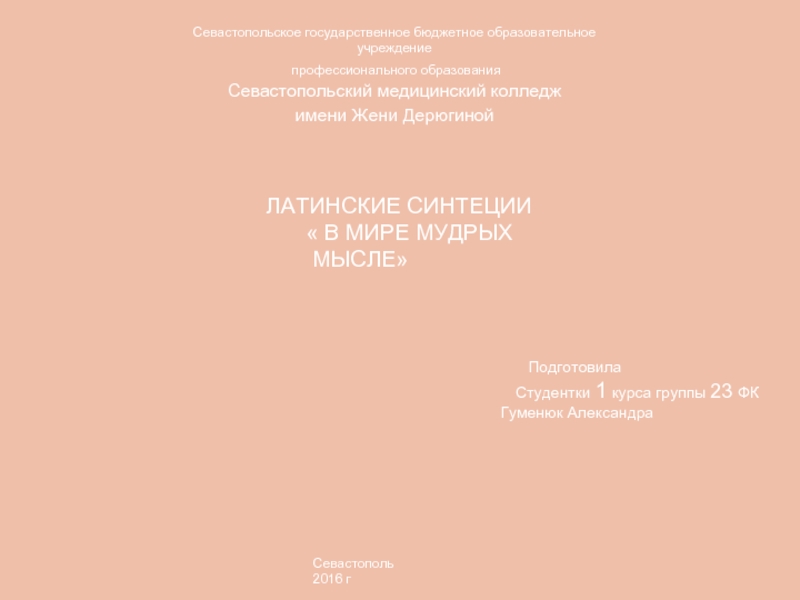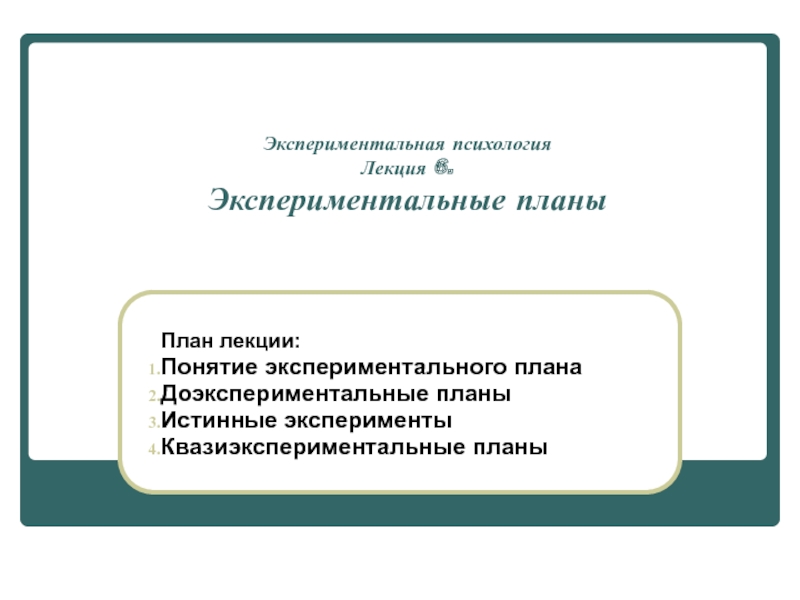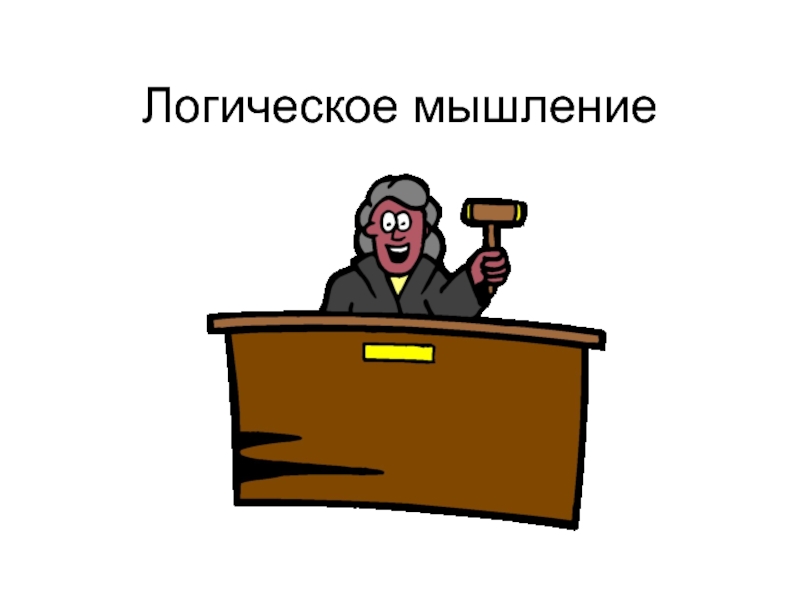- Главная
- Разное
- Дизайн
- Бизнес и предпринимательство
- Аналитика
- Образование
- Развлечения
- Красота и здоровье
- Финансы
- Государство
- Путешествия
- Спорт
- Недвижимость
- Армия
- Графика
- Культурология
- Еда и кулинария
- Лингвистика
- Английский язык
- Астрономия
- Алгебра
- Биология
- География
- Детские презентации
- Информатика
- История
- Литература
- Маркетинг
- Математика
- Медицина
- Менеджмент
- Музыка
- МХК
- Немецкий язык
- ОБЖ
- Обществознание
- Окружающий мир
- Педагогика
- Русский язык
- Технология
- Физика
- Философия
- Химия
- Шаблоны, картинки для презентаций
- Экология
- Экономика
- Юриспруденция
Sensation and perception презентация
Содержание
- 1. Sensation and perception
- 2. Learning Objectives 3.1 How does sensation travel through
- 3. Sensation Sensation: the activation of receptors in
- 4. Sensation Sense organs: eyes ears nose skin
- 5. Sensory Thresholds Just noticeable difference (jnd or
- 7. Subliminal Sensation Subliminal stimuli: stimuli that are
- 8. Subliminal Sensation Subliminal perception: the process by
- 9. Habituation and Sensory Adaptation Habituation: the tendency
- 10. Habituation and Sensory Adaptation Microsaccades: constant movement
- 11. Perceptual Properties of Light Brightness is determined
- 12. Perceptual Properties of Light Color, or hue,
- 13. Figure 3.1 The Visible Spectrum The wavelengths
- 14. Figure 3.2 Structure of the Eye Light
- 15. Structure of the Eye Cornea: clear membrane
- 16. Structure of the Eye Aqueous humor: visual
- 17. Structure of the Eye Iris: round muscle
- 18. Structure of the Eye Visual accommodation: the
- 19. Structure of the Eye Nearsightedness, or myopia
- 20. Figure 3.3 Nearsightedness and Farsightedness
- 21. Retina, Rods, and Cones Retina: final stop
- 22. Retina, Rods, and Cones Rods: visual sensory
- 23. Retina, Rods, and Cones Blind spot: area
- 24. Figure 3.4 The Parts of the
- 25. Figure 3.5 Crossing of the Optic
- 26. How the Eye Works Dark adaptation: the
- 27. Color Vision Trichromatic theory: theory of color
- 28. Color Vision Opponent-process theory: theory of color
- 29. Figure 3.6 Color Afterimage Stare at
- 30. Color Blindness Monochrome colorblindness: a condition in
- 31. Color Blindness Sex-linked inheritance gene for color-deficient
- 32. Figure 3.7The Ishihara Color Test
- 33. Sound Wavelength: interpreted as frequency or pitch
- 34. Figure 3.8a Sound Waves Two
- 35. Structure of the Ear Auditory canal: short
- 36. Structure of the Ear Eardrum: thin section
- 37. Structure of the Ear Cochlea: snail-shaped structure
- 38. Figure 3.9 The Structure of the Ear
- 39. Theories of Pitch Pitch: psychological experience of
- 40. Theories of Pitch Frequency theory: theory of
- 41. Theories of Pitch Volley principle: theory of
- 42. Types of Hearing Impairments Conduction hearing impairment
- 43. Types of Hearing Impairments Nerve hearing impairment
- 44. Surgery to Help Restore Hearing Cochlear
- 45. Figure 3.10 Cochlear Implant
- 46. Taste Taste buds taste receptor cells in
- 47. Figure 3.10 Cochlear Implant (a)
- 48. Taste Five basic tastes sweet sour salty
- 49. Smell Olfaction (olfactory sense) sense of smell
- 50. Figure 3.13 The Olfactory Receptors
- 51. Somesthetic Senses Somesthetic senses: the body senses
- 52. Somesthetic Senses Skin senses: the sensations of
- 53. Figure 3.14 Cross Section of the Skin and Its Receptors
- 54. Somesthetic Senses Kinesthetic sense: sense of the
- 55. Somesthetic Senses Vestibular senses: the sensations of
- 56. Perception and Constancies Perception the method by
- 57. Perception and Constancies Shape constancy the tendency
- 58. Figure 3.15 Shape Constancy
- 59. Gestalt Principles Figure–ground the tendency to perceive
- 60. Figure 3.16 The Necker Cube
- 61. Figure 3.17 Figure-Ground Illusion
- 62. Gestalt Principles Proximity tendency to perceive objects
- 63. Gestalt Principles Closure tendency to complete figures
- 64. Gestalt Principles Contiguity tendency to perceive two
- 65. Figure 3.18 Gestalt Principles of Grouping
- 66. Development of Perception Depth perception: the ability
- 67. Monocular Cues Monocular cues (pictorial depth cues):
- 68. Monocular Cues Monocular Cues (cont’d) overlap: the
- 69. Monocular Cues Monocular Cues (cont’d) aerial (atmospheric)
- 70. Monocular Cues Monocular Cues (cont’d) motion parallax:
- 71. Figure 3.19 Examples of Pictorial
- 72. Binocular Cues Binocular cues: cues for perceiving
- 73. Binocular Cues Binocular Cues (cont’d) binocular disparity:
- 74. Figure 3.20 Binocular Cues to Depth Perception
- 75. Perceptual Illusions Hermann grid: is possibly due
- 76. Figure 3.21 The Hermann Grid
- 77. Figure 3.22 The Müller-lyer illusion
- 78. Perceptual Illusions Moon illusion: the moon on
- 79. Perceptual Illusions Illusions of motion autokinetic effect:
- 80. Perceptual Illusions Illusions of motion phi phenomenon:
- 81. Figure 3.23 “Rotating Snakes”
- 82. Figure 3.24 “Reinterpretation of Enigma”
- 83. Perceptual Illusions Ames Room Illusion LO 3.11 How Visual Illusions and Other Factors Influence Perception
- 84. Factors that Influence Perception Perceptual set (perceptual
- 85. Figure 3.25 Perceptual Set Look
- 86. Figure 3.25 Perceptual Set (Cont’d) Would you
- 87. Factors that Influence Perception Bottom-up processing: the
- 88. Figure 3.26 The Devil’s Trident
Слайд 2Learning Objectives
3.1 How does sensation travel through the central nervous system, and
3.2 What is light, and how does it travel through the various parts of the eye?
3.3 How do the eyes see, and how do the eyes see different colors?
3.4 What is sound, and how does it travel through the various parts of the ear?
3.5 Why are some people unable to hear, and how can their hearing be improved?
3.6 How do the senses of taste and smell work, and how are they alike?
3.7 What allows people to experience the sense of touch, pain, motion, and balance?
3.8 What are perception and perceptual constancies?
3.9 What are the Gestalt principles of perception?
3.10 What is depth perception and what kind of cues are important for it to occur?
3.11 What are visual illusions and how can they and other factors influence and alter perception?
Слайд 3Sensation
Sensation: the activation of receptors in the various sense organs
Sensory receptors:
Stimulated by different kids of energy rather than by neurotransmitters
LO 3.1 Sensation and How It Enters the Central Nervous System
Слайд 4Sensation
Sense organs:
eyes
ears
nose
skin
taste buds
Transduction: turning outside stimuli into neural activity
LO 3.1 Sensation
Слайд 5Sensory Thresholds
Just noticeable difference (jnd or the difference threshold): the smallest
Absolute threshold: the smallest amount of energy needed for a person to consciously detect a stimulus 50 percent of the time it is present
LO 3.1 Sensation and How It Enters the Central Nervous System
Слайд 7Subliminal Sensation
Subliminal stimuli: stimuli that are below the level of conscious
just strong enough to activate the sensory receptors, but not strong enough for people to be consciously aware of them
limin: “threshold”
sublimin: “below the threshold”
LO 3.1 Sensation and How It Enters the Central Nervous System
Слайд 8Subliminal Sensation
Subliminal perception: the process by which subliminal stimuli act upon
LO 3.1 Sensation and How It Enters the Central Nervous System
Слайд 9Habituation and Sensory Adaptation
Habituation: the tendency of the brain to stop
Sensory adaptation: the tendency of sensory receptor cells to become less responsive to a stimulus that is unchanging
LO 3.1 Sensation and How It Enters the Central Nervous System
Слайд 10Habituation and Sensory Adaptation
Microsaccades: constant movement of the eyes; tiny little
prevent sensory adaptation to visual stimuli
LO 3.1 Sensation and How It Enters the Central Nervous System
Слайд 11Perceptual Properties of Light
Brightness is determined by the amplitude of the
the higher the wave, the brighter the light will be
low waves are dimmer
LO 3.2 What Is Light?
Слайд 12Perceptual Properties of Light
Color, or hue, is determined by the length
long wavelengths are found at the red end of the visible spectrum (the portion of the whole spectrum of light that is visible to the human eye)
shorter wavelengths are found at the blue end
Saturation: the purity of the color people see
mixing in black or gray would lessen the saturation
LO 3.2 What Is Light?
Слайд 13Figure 3.1 The Visible Spectrum The wavelengths that people can see are
Слайд 14Figure 3.2 Structure of the Eye Light enters the eye through the
Слайд 15Structure of the Eye
Cornea: clear membrane that covers the surface of
protects the eye
focuses most of the light coming into the eye
photoreactive keratectomy (PRK) and laser-assisted in situ keratomileusis (LASIK): vision-improving techniques that make small incisions in the cornea to change the focus in the eye
LO 3.2 What Is Light?
Слайд 16Structure of the Eye
Aqueous humor: visual layer below cornea
clear, watery fluid
supplies nourishment to the eye
Pupil: hole through which light from the visual image enters the interior of the eye
LO 3.2 What Is Light?
Слайд 17Structure of the Eye
Iris: round muscle (the colored part of the
can change the size of the pupil, letting more or less light into the eye
helps focus the image
Lens: another clear structure behind the iris, suspended by muscles
finishes the focusing process begun by the cornea
LO 3.2 What Is Light?
Слайд 18Structure of the Eye
Visual accommodation: the change in the thickness of
Vitreous humor: jelly-like fluid that also nourishes the eye and gives it shape
LO 3.2 What Is Light?
Слайд 19Structure of the Eye
Nearsightedness, or myopia
the shape of the eye causes
Farsightedness, or hyperopia
the focus point is behind the retina
LO 3.2 What Is Light?
Слайд 21Retina, Rods, and Cones
Retina: final stop for light in the eye
contains
ganglion cells
bipolar cells
photoreceptors that respond to various light waves
LO 3.2 What Is Light?
Слайд 22Retina, Rods, and Cones
Rods: visual sensory receptors found at the back
responsible for noncolor sensitivity to low levels of light
Cones: visual sensory receptors found at the back of the retina
responsible for color vision and sharpness of vision
LO 3.2 What Is Light?
Слайд 23Retina, Rods, and Cones
Blind spot: area in the retina where the
LO 3.2 What Is Light?
Слайд 24
Figure 3.4 The Parts of the Retina
light passes through ganglion and
On the right of the figure is a photomicrograph of the long, thin rods and the shorter, thicker cones; the rods outnumber the cones by a ratio of about 20 to 1.
The blind spot demonstration. Hold the book in front of you. Close your right eye and stare at the picture of the dog with your left eye. Slowly bring the book closer to your face. The picture of the cat will disappear at some point because the light from the picture of the cat is falling on your blind spot. If you cannot seem to find your blind spot, trying moving the book more slowly.
Слайд 25
Figure 3.5 Crossing of the Optic Nerve
Light falling on the left
Слайд 26How the Eye Works
Dark adaptation: the recovery of the eye’s sensitivity
night blindness
Light adaptation: the recovery of the eye’s sensitivity to visual stimuli in light after exposure to darkness
LO 3.3 How Eyes See and How Eyes See Color
Слайд 27Color Vision
Trichromatic theory: theory of color vision that proposes three types
LO 3.3 How Eyes See and How Eyes See Color
Слайд 28Color Vision
Opponent-process theory: theory of color vision that proposes four primary
afterimages: images that occur when a visual sensation persists for a brief time even after the original stimulus is removed
lateral geniculate nucleus (LGN) of thalamus
LO 3.3 How Eyes See and How Eyes See Color
Слайд 29
Figure 3.6 Color Afterimage
Stare at the white dot in the center
Слайд 30Color Blindness
Monochrome colorblindness: a condition in which a person’s eyes either
Red-green colorblindness: either the red or the green cones are not working
LO How Eyes See and How Eyes See Color
Слайд 31Color Blindness
Sex-linked inheritance
gene for color-deficient vision is recessive
LO 3.3 How Eyes
Слайд 33Sound
Wavelength: interpreted as frequency or pitch (high, medium, or low)
Amplitude: interpreted
Purity: interpreted as timbre (a richness in the tone of the sound)
Hertz (Hz): cycles or waves per second, a measurement of frequency
LO 3.4 What Is Sound?
Слайд 34
Figure 3.8a Sound Waves
Two sound waves. The higher the wave, the
Слайд 35Structure of the Ear
Auditory canal: short tunnel that runs from the
LO 3.4 What Is Sound?
Слайд 36Structure of the Ear
Eardrum: thin section of skin that tightly covers
when sound waves hit the eardrum, it vibrates and causes three tiny bones in the middle ear to vibrate
hammer
anvil
stirrup
LO 3.4 What Is Sound?
Слайд 37Structure of the Ear
Cochlea: snail-shaped structure of the inner ear that
Organ of Corti: rests in the basilar membrane
contains receptor cells for sense of hearing
Auditory nerve: bundle of axons from the hair cells in the inner ear
receives neural message from the organ of Corti
LO 3.4 What Is Sound
Слайд 39Theories of Pitch
Pitch: psychological experience of sound that corresponds to the
higher frequencies are perceived as higher pitches
Place theory: theory of pitch that states that different pitches are experienced by the stimulation of hair cells in different locations on the organ of Corti
LO 3.4 What Is Sound?
Слайд 40Theories of Pitch
Frequency theory: theory of pitch that states that pitch
LO 3.4 What Is Sound?
Слайд 41Theories of Pitch
Volley principle: theory of pitch that states that frequencies
LO 3.4 What Is Sound?
Слайд 42Types of Hearing Impairments
Conduction hearing impairment can result from:
damaged eardrum: would
damage to the bones of the middle ear: sounds cannot be conducted from the eardrum to the cochlea
LO 3.5 Hearing Impairment and Improvement
Слайд 43Types of Hearing Impairments
Nerve hearing impairment can result from:
damage in the
damage in the auditory pathways and cortical areas of the brain
LO 3.5 Hearing Impairment and Improvement
Слайд 44Surgery to Help Restore Hearing
Cochlear implant: a microphone implanted just
speech processor selects and arranges the sound picked up by the microphone
implant is a transmitter and receiver, converting signals into electrical impulses
Collected by the electrode array in the cochlea and then sent to the brain
LO 3.5 Hearing Impairment and Improvement
Слайд 46Taste
Taste buds
taste receptor cells in mouth; responsible for sense of taste
Gustation
the
LO 3.6 How Senses of Taste and Smell Work
Слайд 47
Figure 3.10 Cochlear Implant
(a) Nerves in the tongue’s deep tissue (b)
Слайд 48Taste
Five basic tastes
sweet
sour
salty
bitter
“brothy,” or umami
LO 3.6 How Senses of Taste and
Слайд 49Smell
Olfaction (olfactory sense)
sense of smell
Olfactory bulbs
areas of the brain located just
At least 1,000 olfactory receptors
LO 3.6 How Senses of Taste and Smell Work
Слайд 51Somesthetic Senses
Somesthetic senses: the body senses consisting of the skin senses,
“soma”: body
“esthetic”: feeling
LO 3.7 Sense of Touch, Pain, Motion, and Balance
Слайд 52Somesthetic Senses
Skin senses: the sensations of touch, pressure, temperature, and pain
sensory
gate-control theory: pain signals must pass through a “gate” located in the spinal cord
LO 3.7 Sense of Touch, Pain, Motion, and Balance
Слайд 54Somesthetic Senses
Kinesthetic sense: sense of the location of body parts in
proprioceptive receptors (proprioceptors)
LO 3.7 Sense of Touch, Pain, Motion, and Balance
Слайд 55Somesthetic Senses
Vestibular senses: the sensations of movement, balance, and body position
Sensory conflict theory: an explanation of motion sickness in which the information from the eyes conflicts with the information from the vestibular senses
results in dizziness, nausea, and other physical discomforts
LO 3.7 Sense of Touch, Pain, Motion, and Balance
Слайд 56Perception and Constancies
Perception
the method by which the sensations experienced at any
Size constancy
the tendency to interpret an object as always being the same actual size, regardless of its distance
LO 3.8 Perception and Perceptual Constancies
Слайд 57Perception and Constancies
Shape constancy
the tendency to interpret the shape of an
Brightness constancy
the tendency to perceive the apparent brightness of an object as the same even when the light conditions change
LO 3.8 Perception and Perceptual Constancies
Слайд 59Gestalt Principles
Figure–ground
the tendency to perceive objects, or figures, as existing on
Reversible figures
visual illusions in which the figure and ground can be reversed
LO 3.9 Gestalt Principles of Perception
Слайд 62Gestalt Principles
Proximity
tendency to perceive objects that are close to each other
Similarity
tendency to perceive things that look similar to each other as being part of the same group
LO 3.9 Gestalt Principles of Perception
Слайд 63Gestalt Principles
Closure
tendency to complete figures that are incomplete
Continuity
tendency to perceive things
LO 3.9 Gestalt Principles of Perception
Слайд 64Gestalt Principles
Contiguity
tendency to perceive two things that happen close together in
LO 3.9 Gestalt Principles of Perception
Слайд 66Development of Perception
Depth perception: the ability to perceive the world in
LO 3.10 What Is Depth Perception?
Слайд 67Monocular Cues
Monocular cues (pictorial depth cues): cues for perceiving depth based
linear perspective: the tendency for parallel lines to appear to converge on each other
relative size: perception that occurs when objects that a person expects to be of a certain size appear to be small and are, therefore, assumed to be much farther away
LO 3.10 What Is Depth Perception?
Слайд 68Monocular Cues
Monocular Cues (cont’d)
overlap: the assumption that an object that appears
LO 3.10 What Is Depth Perception?
Слайд 69Monocular Cues
Monocular Cues (cont’d)
aerial (atmospheric) perspective: the haziness that surrounds objects
texture gradient: the tendency for textured surfaces to appear to become smaller and finer as distance from the viewer increases
LO 3.10 What Is Depth Perception?
Слайд 70Monocular Cues
Monocular Cues (cont’d)
motion parallax: the perception of motion of objects
accommodation: as a monocular clue, the brain’s use of information about the changing thickness of the lens of the eye in response to looking at objects that are close or far away
LO 3.10 What Is Depth Perception?
Слайд 71
Figure 3.19 Examples of Pictorial Depth Cues
(a) Linear perspective, (b) texture
Слайд 72Binocular Cues
Binocular cues: cues for perceiving depth based on both eyes
convergence:
LO 3.10 What Is Depth Perception?
Слайд 73Binocular Cues
Binocular Cues (cont’d)
binocular disparity: the difference in images between the
LO 3.10 What Is Depth Perception?
Слайд 75Perceptual Illusions
Hermann grid: is possibly due to the response of the
Müller-Lyer illusion: illusion of line length that is distorted by inward-turning or outward-turning corners on the ends of the lines, causing lines of equal length to appear to be different
LO 3.11 How Visual Illusions and Other Factors Influence Perception
Слайд 78Perceptual Illusions
Moon illusion: the moon on the horizon appears to be
apparent distance hypothesis
LO 3.11 How Visual Illusions and Other Factors Influence Perception
Слайд 79Perceptual Illusions
Illusions of motion
autokinetic effect: a small, stationary light in a
stroboscopic motion: seen in motion pictures, in which a rapid series of still pictures will appear to be in motion
LO 3.11 How Visual Illusions and Other Factors Influence Perception
Слайд 80Perceptual Illusions
Illusions of motion
phi phenomenon: lights turned on in a sequence
rotating snakes: due in part to eye movements
The Enigma: due in part to microsaccades
LO 3.11 How Visual Illusions and Other Factors Influence Perception
Слайд 83Perceptual Illusions
Ames Room Illusion
LO 3.11 How Visual Illusions and Other Factors
Слайд 84Factors that Influence Perception
Perceptual set (perceptual expectancy): the tendency to perceive
Top-down processing: the use of preexisting knowledge to organize individual features into a unified whole
LO 3.11 How Visual Illusions and Other Factors Influence Perception
Слайд 85
Figure 3.25 Perceptual Set
Look at the drawing. What do you see?
Слайд 86Figure 3.25 Perceptual Set (Cont’d)
Would you have interpreted the first drawing
Old woman
Young woman
Слайд 87Factors that Influence Perception
Bottom-up processing: the analysis of the smaller features
LO 3.11 How Visual Illusions and Other Factors Influence Perception

